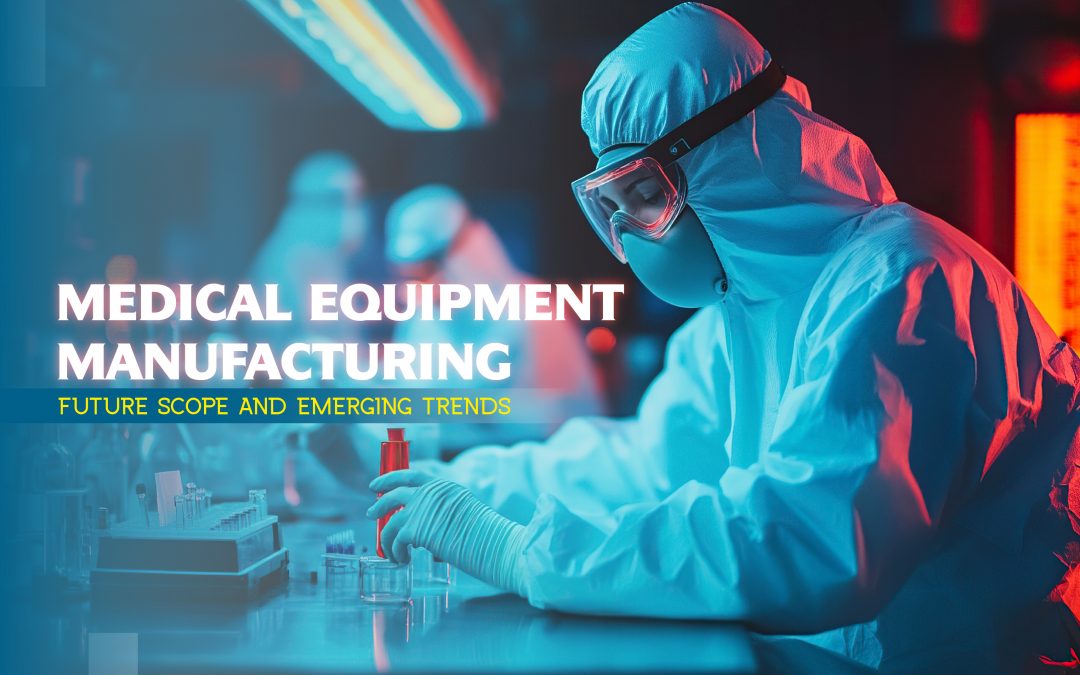The medical equipment manufacturing industry is on the cusp of a transformative era. With the rapid advancement of technology and evolving healthcare needs, the future holds exciting possibilities. This blog delves into the key areas that will shape the industry’s future, providing a detailed look at what’s on the horizon.
1. Digital Health and Telemedicine: The Future of Healthcare Delivery
The global adoption of digital health solutions is set to redefine healthcare. By 2026, the digital health market is expected to reach $660 billion, driven by the increasing reliance on telemedicine and remote patient monitoring. This growth is fueled by the demand for accessible healthcare, especially in remote areas where traditional healthcare infrastructure is limited.
- Remote Monitoring Devices: Expect to see a surge in devices that monitor chronic conditions such as diabetes and heart disease. These devices will integrate seamlessly with healthcare providers’ systems, offering real-time data and AI-driven insights to improve patient outcomes.
- Virtual Care Platforms: Telemedicine platforms are evolving to include more than just video consultations. The next generation of platforms will incorporate AI diagnostics, virtual reality (VR) for mental health therapy, and even remote surgery assistance using robotics.
2. 3D Printing and Additive Manufacturing: Revolutionizing Medical Devices
3D printing is no longer just a novelty; it’s becoming a cornerstone of medical device manufacturing. By 2027, the 3D printing medical devices market is projected to surpass $7.9 billion, with applications ranging from custom prosthetics to bioprinted organs.
- Personalized Implants: The future will see an increase in patient-specific implants, reducing the risk of complications and improving recovery times. Expect 3D-printed orthopedic implants and dental devices to become the standard.
- Bioprinting: While still in its early stages, bioprinting of tissues and organs is advancing rapidly. By the late 2020s, we may see bioprinted tissues used in drug testing and eventually in human transplants.
3. Wearable Medical Devices: Continuous Health Monitoring
The wearable medical device market is set to explode, with forecasts predicting it will reach $93 billion by 2028. This growth is driven by the increasing demand for devices that offer continuous monitoring of vital signs, helping to prevent serious health issues before they arise.
- Advanced Health Trackers: Future wearables will go beyond tracking steps and heart rate. Expect devices that monitor blood pressure, glucose levels, and even hydration status, providing comprehensive health data to users and their healthcare providers.
- Integration with AI: AI will play a critical role in interpreting the data from these devices, offering predictive analytics that can alert users to potential health risks in real time.
4. Sustainability in Manufacturing: Eco-Friendly Medical Devices
As the world becomes more environmentally conscious, the medical equipment manufacturing industry is under pressure to reduce its environmental impact. By 2030, it’s expected that sustainability will be a key factor in the design and production of medical devices, influencing both regulatory approvals and market acceptance.
- Sustainable Materials: The future will see a shift towards biodegradable materials and recycled components in medical device manufacturing. Companies that adopt these materials early will have a competitive advantage.
- Energy-Efficient Production: Innovations in manufacturing processes will lead to energy-efficient production lines, reducing the carbon footprint of medical device production. Expect to see more manufacturers investing in renewable energy sources and green manufacturing practices.
5. Artificial Intelligence and Machine Learning: Enhancing Medical Device Functionality
AI and machine learning are set to revolutionize the functionality of medical devices, making them smarter, more efficient, and more effective. By 2025, the AI healthcare market is expected to exceed $190 billion, with a significant portion of this growth driven by AI-powered medical devices.
- AI Diagnostics: AI-driven diagnostic tools will become more prevalent, offering faster and more accurate diagnoses. For example, AI-enabled imaging devices will be able to detect diseases at earlier stages, improving treatment outcomes.
- Predictive Maintenance: AI will also play a role in the maintenance of medical equipment, predicting when devices are likely to fail and scheduling preventative maintenance, thus reducing downtime and improving patient care.
6. Robotics and Automation: The Future of Precision Medicine
Robotics is not just for the operating room anymore; it’s set to become an integral part of the entire medical equipment manufacturing process. By 2032, the global medical robotics market is projected to reach $32 billion, driven by advancements in precision medicine and automated manufacturing processes.
- Surgical Robots: Next-generation surgical robots will offer greater precision, enabling minimally invasive procedures that reduce recovery times and improve patient outcomes. Robotics will also be used in complex surgeries that were previously considered too risky.
- Automated Manufacturing: Robotics and automation will streamline the production of medical devices, reducing costs and improving quality. Expect to see more fully automated production lines capable of producing complex devices with minimal human intervention.
7. Regulatory Innovations: Fast-Tracking Medical Device Approvals
As medical devices become more complex, regulatory bodies are adapting to ensure that innovations reach the market more quickly. By 2025, new regulatory pathways will emerge, focusing on fast-tracking the approval of devices that address critical healthcare needs.
- AI-Driven Regulation: Regulatory agencies will increasingly use AI to assess the safety and efficacy of new devices, speeding up the approval process. This will particularly benefit startups and smaller manufacturers looking to bring innovative products to market quickly.
- Global Harmonization: Expect to see more efforts toward harmonizing regulatory standards across major markets, making it easier for manufacturers to launch products internationally without facing multiple regulatory hurdles.
Conclusion
The future of medical equipment manufacturing is bright and filled with opportunities for innovation and growth. As technology continues to advance, manufacturers that embrace these trends will not only meet the evolving needs of healthcare providers but also play a pivotal role in shaping the future of medicine. The key to success in this dynamic industry will be staying ahead of these trends, investing in research and development, and maintaining a focus on sustainability and patient-centric solutions.













